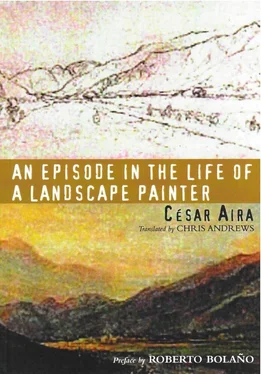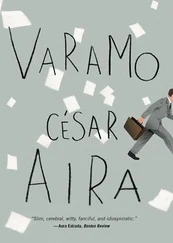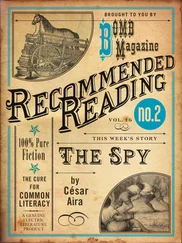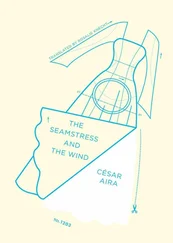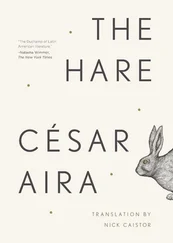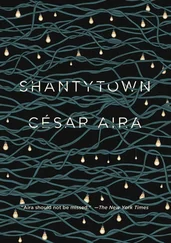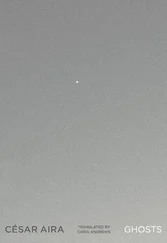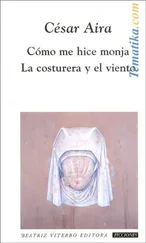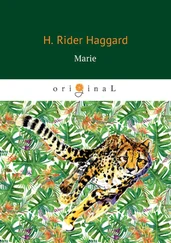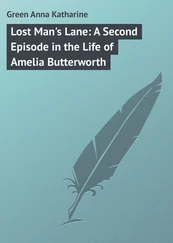Cesar Aira - An Episode in the Life of a Landscape Painter
Здесь есть возможность читать онлайн «Cesar Aira - An Episode in the Life of a Landscape Painter» весь текст электронной книги совершенно бесплатно (целиком полную версию без сокращений). В некоторых случаях можно слушать аудио, скачать через торрент в формате fb2 и присутствует краткое содержание. Год выпуска: 2006, Издательство: New Directions, Жанр: Современная проза, на английском языке. Описание произведения, (предисловие) а так же отзывы посетителей доступны на портале библиотеки ЛибКат.
- Название:An Episode in the Life of a Landscape Painter
- Автор:
- Издательство:New Directions
- Жанр:
- Год:2006
- ISBN:нет данных
- Рейтинг книги:5 / 5. Голосов: 1
-
Избранное:Добавить в избранное
- Отзывы:
-
Ваша оценка:
- 100
- 1
- 2
- 3
- 4
- 5
An Episode in the Life of a Landscape Painter: краткое содержание, описание и аннотация
Предлагаем к чтению аннотацию, описание, краткое содержание или предисловие (зависит от того, что написал сам автор книги «An Episode in the Life of a Landscape Painter»). Если вы не нашли необходимую информацию о книге — напишите в комментариях, мы постараемся отыскать её.
An Episode in the Life of a Landscape Painter
An Episode in the Life of a Landscape Painter — читать онлайн бесплатно полную книгу (весь текст) целиком
Ниже представлен текст книги, разбитый по страницам. Система сохранения места последней прочитанной страницы, позволяет с удобством читать онлайн бесплатно книгу «An Episode in the Life of a Landscape Painter», без необходимости каждый раз заново искать на чём Вы остановились. Поставьте закладку, и сможете в любой момент перейти на страницу, на которой закончили чтение.
Интервал:
Закладка:
They dismounted in the shade. Between convulsions, Rugendas took all his remedies at once, without measuring the doses, and fell asleep. He woke up half an hour later, free of acute pain but in a delirious daze. The only thread attaching him to reality was an urgent desire to follow the events at close hand. By this stage, of course, the raid seemed to be simply one more hallucination. He was still wearing the mantilla, and must have needed it more than ever now. Krause did not dare ask him to remove it for a moment so he could see his face. He was beginning to speculate wildly about what might be hidden behind the lace. He tried to stop thinking about it, but could not help himself. Lifting Rugendas back into the saddle, he was amazed by the coldness of his body.
In terms of the physiognomy of combat, the best was still to come, at El Tambo. They sketched the battle from various points of view, for hours, until after midday. It was an uninterrupted parade of Indians, compensating for the brevity of their appearances by repeating them. Rugendas found himself making pluralist sketches. But wasn't that what he always did? Even when he drew one of the nineteen types of vegetation identified by the procedure, he was taking its reproduction into account, seeing it as part of a multitudinous species, which would go on making nature. Continually reappearing from the wings, the Indians were, in their way, making history.
The postures they adopted on horseback were beyond belief. This exhibitionism was part of a system for inspiring fear at a distance. There was something circus-like about it, with shooting instead of applause. They didn't care about the laws of gravity, or even whether the full value of their performance was being appreciated; the postures, it is true, had no value in themselves. Rugendas would have to rectify them on paper, to make them plausible in the context of a static composition. But in his sketches the rectification was incomplete, so traces of their real strangeness remained, archeological traces in a sense, because they were overlaid and obscured by speed.
Mounted squads emerged periodically from El Tambo — a complex of low buildings adjoined by extensive corrals — with all their firearms blazing, momentarily breaking the rings of savages, which reformed within seconds. The dairy cows had lain down; they looked like dark lumps. The dances of the Indian horsemen attained extremes of fantasy when it came to displaying their captives. This was a distinctive feature of the raids, almost a defining trait. Stealing women, as well as livestock, was what made it all worthwhile. In fact, it was an extremely rare occurrence, and functioned more as excuse and propitiatory myth. Unsuccessful as usual, the Indians at El Tambo displayed the captives they had not been able to take, with defiant and, again, extremely graphic gestures.
They came around the hill by the stream, a little group of them, lances raised, yelling: Huinca! Kill! Arrghh! The loudest, in the middle of the group, was triumphantly holding a "captive," perched sideways on the neck of his horse. Naturally this was not a captive at all, but another Indian, disguised as a woman; he was making effeminate gestures, but no one could have fallen for such a crude trick, and even the Indians seemed to be treating it as a joke.
Whether for fun or to make a symbolic point, they took it further. An Indian rode past comically cuddling a "captive" which was in fact a white calf. The soldiers intensified their fire, as if the taunts had enraged them, but perhaps that was not the reason. The next display took extravagance to the limit: the "captive" was an enormous salmon, pink and still wet from the river, slung across the horse's neck, clasped by a muscular Indian, who was shouting and laughing as if to say: "I'm taking this one for reproduction."
All these scenes were much more like pictures than reality. In pictures, the scenes can be thought out, invented, which means that they can surpass themselves in terms of strangeness, incoherence and madness. In reality, by contrast, they simply happen, without preliminary invention. There at El Tambo, they were happening, and yet it was as if they were inventing themselves, as if they were flowing from the udders of the black cows.
Had the artists been close to the action, it would have been impossible to transfer it to paper, even using some kind of shorthand. But distance made a picture of it all, by including everything: the Indians, the path by the stream, El Tambo, the soldiers, the cart track, the shots, the cries and the broader view of the valley, the mountains and the sky. They had to shrink everything down to a dot, and be ready to reduce it further still.
Within each circle there was a transitive, transparent cascade, from which the picture recomposed itself, as art. Tiny figures running around the landscape, in the sun. Of course, in the picture, they could be seen close up, although they were no bigger than grains of sand; the viewer could come as near as he liked, subject them to a microscopic scrutiny. And that would bring out the hidden strangeness: what would be called "surrealism" a hundred years later but was known, at the time, as "the physiognomy of nature"; in other words, the procedure.
The parade continued, at varying speeds. It seemed the riders would never tire. Suddenly all the soldiers came out at once and the Indians scattered, heading for the mountains. Taking advantage of the informal truce that ensued, our friends entered El Tambo, where a wake was being held. One of the dairy farmers had been killed by the Indians early that morning. The women had put his body back together. So there had been one casualty at least. The two Germans respectfully asked permission to draw the corpse. They reflected that it would not be easy to find the culprit, were anyone to try. Then they visited the labyrinthine stockyards and accepted an invitation to lunch. There was roast meat and nothing else, not even bread. "Roast Indian," said the soldier turning the spit, with a guffaw. But it was veal, very tender and cooked to perfection. They drank water, because there was a busy afternoon ahead. Since everyone else was retiring for the siesta, Krause was able to persuade Rugendas to rest for a while. They went and lay down on the banks of the stream.
Krause was intrigued. He had not expected his friend to bear up under the strain, yet he seemed willing to keep going, although not to show his face. He had eaten very little, barely lifting the hem of his lace mask away from his chin, and when his friend had diffidently asked if it was not awkward to eat like that, he had replied that the midday light would wound his eyes like a knife. It was the first time Krause had seen him so cautious, even on days of very bright light and after having ingested large quantities of analgesics. No doubt the circumstances were exceptional. Still it was odd for someone so fastidious to persist in wearing a grease-spattered mantilla.
Rugendas took some more powdered poppy extract, but remained awake behind the opaque black lace. As Krause was not sleepy either, they looked over their drawings and discussed them. There was certainly no shortage of material, but they were not so sure about its quality and the subsequent reconstruction. Both of them had been making these discrete sketches with the sole aim of composing stories, or scenes from stories. The scenes would be part of the larger story of the raid, which in turn was a very minor episode in the ongoing clash of civilizations. There is an analogy that, although far from perfect, may shed some light on this process of reconstruction. Imagine a brilliant police detective summarizing his investigations for the husband of the victim, the widower. Thanks to his subtle deductions he has been able to "reconstruct" how the murder was committed; he does not know the identity of the murderer, but he has managed to work out everything else with an almost magical precision, as if he had seen it happen. And his interlocutor, the widower, who is, in fact, the murderer, has to admit that the detective is a genius, because it really did happen exactly as he says; yet at the same time, although of course he actually saw it happen and is the only living eyewitness as well as the culprit, he cannot match what happened with what the policeman is telling him, not because there are errors, large or small, in the account, or details out of place, but because the match is inconceivable, there is such an abyss between one story and the other, or between a story and the lack of a story, between the lived experience and the reconstruction (even when the reconstruction has been executed to perfection) that widower simply cannot see a relation between them; which leads him to conclude that he is innocent, that he did not kill his wife.
Читать дальшеИнтервал:
Закладка:
Похожие книги на «An Episode in the Life of a Landscape Painter»
Представляем Вашему вниманию похожие книги на «An Episode in the Life of a Landscape Painter» списком для выбора. Мы отобрали схожую по названию и смыслу литературу в надежде предоставить читателям больше вариантов отыскать новые, интересные, ещё непрочитанные произведения.
Обсуждение, отзывы о книге «An Episode in the Life of a Landscape Painter» и просто собственные мнения читателей. Оставьте ваши комментарии, напишите, что Вы думаете о произведении, его смысле или главных героях. Укажите что конкретно понравилось, а что нет, и почему Вы так считаете.
